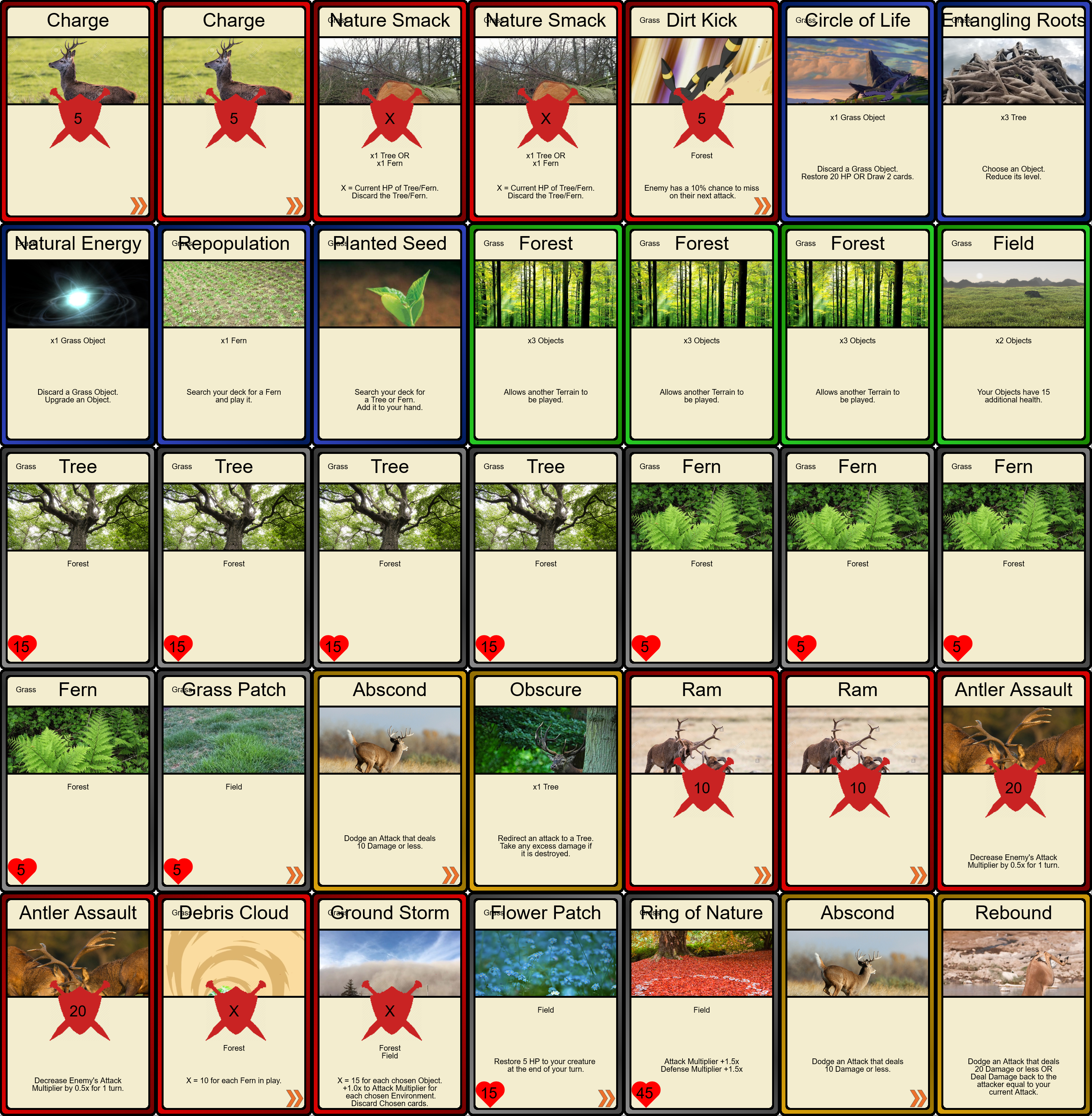Decks and Mechanics
Testing Decks
Each person created a deck with a different playstyle and card mechanics for the first big playtest.

- David L created a “Nature” Deck, which revolved around building lots of Objects in the Environment to outlast the opponent. It was slower, and relied on a large-scale, final attack to defeat the opponent with one attack.
.png)
- David K created a “Fire” Deck, which was the most aggressive deck, and revolved around dealing tons of damage as fast as possible. The deck worked by destroying Objects as a cost for being able to play powerful attacks early in the game.

- Nate created an “Ocean” Deck, which focused on controlling the board by building up its Environment, while also destroying the opponent’s Environment. It then built up over time to eventually overwhelm the opponent with powerful attacks and Environment Object effects.
Obviously, these decks were not balanced, but they weren’t supposed to be. David K’s deck was clearly the strongest deck, since it did so much damage so quickly, other decks didn’t have a chance to do anything. Nate’s deck was too good at removing Objects, and so the Nature deck from David L couldn’t play anything, since it revolved around Objects.
In order to get a better feel for each deck, we decided to rebalance the decks a little bit.
The Next Day
We came back together to test the new rebalanced decks. Now we started to see the decks’ mechanics working as intended.
-
The Nature deck was still too slow, but building up to a single powerful attack was working. This deck was also interesting, since a main mechanic of the deck was the ability to break the rules of the game in order to place more than the maximum number of Objects on the board.
-
The Fire deck became too weak, but it was able to stay alive long enough for the other two decks be tested.
-
The Ocean deck really shined in this test. The deck played at a good speed, without feeling to strong or too difficult to play against. The deck ramped up slowly, gaining power over the course of the game, in order to win in the late game. It now focused less on destroying the opponent’s board, and focused more on building itself up, which felt good for both players.
Next Steps
Now that we had some solid mechanics, and a better feel for the game, we could branch out and really start building interesting cards.
Our main goal with early prototyping is to discover what kinds of cards and mechanics work within our game, so decks such as the Ocean deck no longer need to be tested or changed; we want to create new deck archetypes and crazy/unique mechanics to push the boundaries of our game.
Because of this, Nate decided to build a new deck based around a mechanic that had been pushed to the side, Summoning. His new deck (Robo deck) based itself around Summoning large numbers of Summons, and destroying them to use powerful effects, or as a way to block attacks. The crazy mechanic that was added to this deck was an “Exodia” effect; having five specific cards in play would cause the player to instantly win the game.
The other decks still needed to be tweaked and tested, so the Davids continued to modify their existing decks.
Written By: Nate Glick